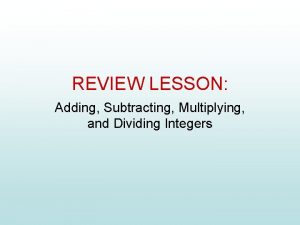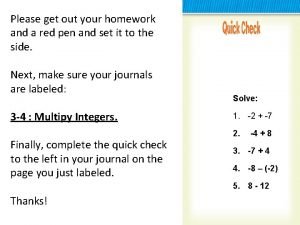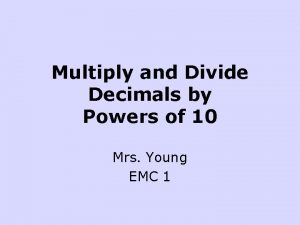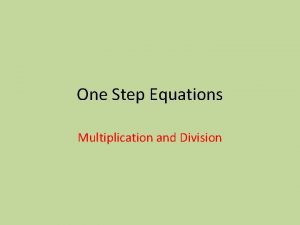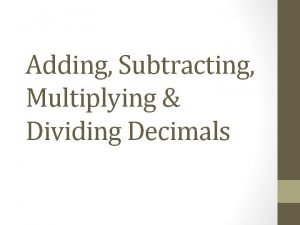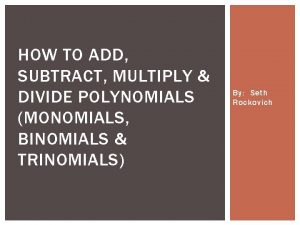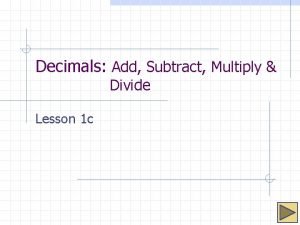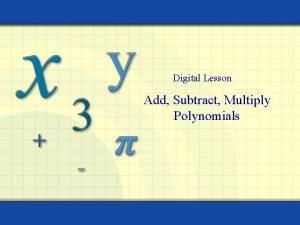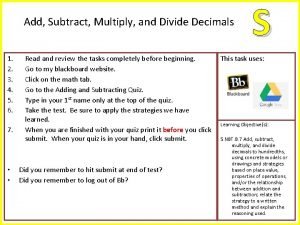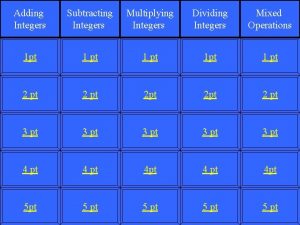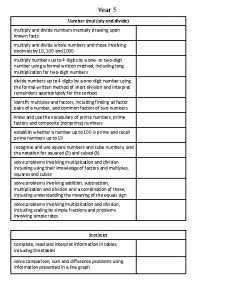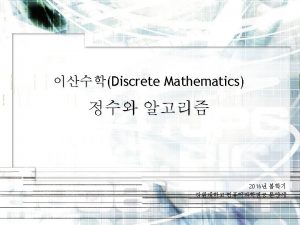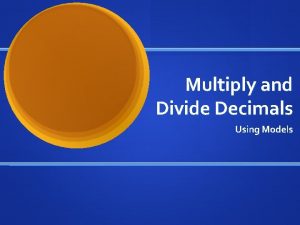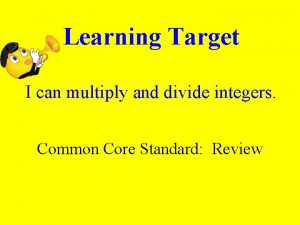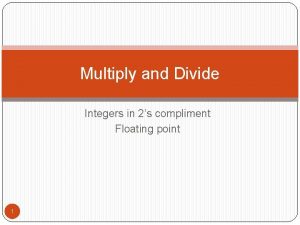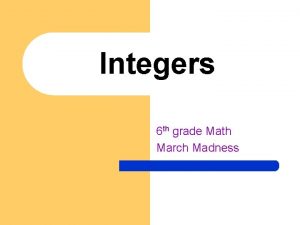MULTIPLY AND DIVIDE INTEGERS 7 th Grade math














- Slides: 14

MULTIPLY AND DIVIDE INTEGERS 7 th Grade math

MULTIPLYING INTEGERS

MULTIPLYING INTEGERS Easy, breezy, lemon, squeezy!!

Remember: Represents 4 groups of 2 OR 2 groups of 4 Model the following problem on the number line: 4 • 2

Remember: Represents 2 groups of -3 OR The opposite of 3 groups of 2 Model the following problem on the number line: -3 • 2

SO, WHAT’S THE RULE? If the factors have the same sign, your product is POSITIVE. If the factors have a different sign, your product is NEGATIVE. SAME SIGN = POSITIVE Product DIFFERENT SIGNS = NEGATIVE Product

MULTIPLYING INTEGERS – CHECK YOUR ANSWERS ON NEXT SLIDE

MULTIPLYING INTEGERS – ANSWERS!!

INDEPENDENT PRACTICE Glencoe Skills Practice � 2 -6 Additional Practice: � If needed, Glencoe Practice 2 -6 � Mastery, Integer Maze Glencoe 2 -6

DIVIDING INTEGERS Fact Families: � Using multiplication and division, show the fact families for the following problems. 8, 2, 16 3, 9, 27 4, 5, 20 2 • 8 = 16 3 • 9 = 27 4 • 5 = 20 8 • 2 = 16 9 • 3 = 27 5 • 4 = 20 16 ÷ 2 = 8 27 ÷ 9 = 3 20 ÷ 4 = 5 16 ÷ 8 = 2 27 ÷ 3 = 9 20 ÷ 5 = 4

“Develop a Rule” Use your “Fact Family” organizer to develop a rule for dividing signed numbers. 1. - 6 (4) = 4 (- 6) = 2. - 9 • - 4 = -4 • -9=

SO, WHAT’S THE RULE? If the dividend and divisor have the same sign, your quotient is POSITIVE. If the dividend and divisor have different signs, your quotient is NEGATIVE. SAME SIGN = POSITIVE Quotient DIFFERENT SIGNS = NEGATIVE Quotient (LOOK FAMILIAR? !? !? !!)

PRACTICE PROBLEMS 1. 55 ÷ (- 5) 2. 3. -16 ÷ (-4) 4. 32 ÷ - 8 5. -63 ÷ (-7) 6. -81 ÷ 9

INDEPENDENT PRACTICE Glencoe 2 -8
 Adding subtracting multiplying and dividing integers rules
Adding subtracting multiplying and dividing integers rules Lesson 4 multiply integers page 237 answers
Lesson 4 multiply integers page 237 answers Multiplying and dividing decimals by powers of 10
Multiplying and dividing decimals by powers of 10 Division of complex numbers
Division of complex numbers How to add subtract multiply and divide functions
How to add subtract multiply and divide functions One step multiplication equations
One step multiplication equations Multiplying and dividing decimals jeopardy
Multiplying and dividing decimals jeopardy How to add subtract multiply and divide polynomials
How to add subtract multiply and divide polynomials Add subtract multiply divide decimals
Add subtract multiply divide decimals How do we add subtract and multiply complex numbers
How do we add subtract and multiply complex numbers How to add subtract and multiply polynomials
How to add subtract and multiply polynomials Add subtract multiply divide decimals
Add subtract multiply divide decimals Grade 8 integers
Grade 8 integers Traditional division method
Traditional division method The political divide grade 11, 1270l
The political divide grade 11, 1270l
